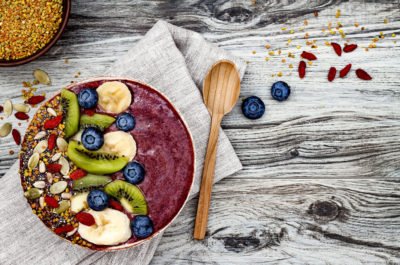Food allergies in our dogs and cats are not always that easy to diagnose. Common symptoms of possible food allergies can include sneezing or chronic coughing, paw chewing, diarrhea, vomiting, indigestion or gas, red skin or missing hair, itchy ears and skin, rash or hives, and ear infections. As much as we care about our beloved pets, there should be no guessing about our dogs or cats when they develop these symptoms.
If you suspect that it is food allergies causing these problems, contact your pet’s veterinarian immediately:
1. Itchy skin and hives
The most common sign of food allergies in both humans and pets is itchiness. When dogs and cats begin to show signs of compulsive itching, particularly around the face or neck, paws, anal area, ear, and limbs it’s a good sign they have a food allergy.
2. Food elimination
As pet owner’s, we are familiar with the common technique of diagnosing food allergies in humans, which is much the same in animals. Using an “elimination” test you can try to pinpoint the source of allergy. For instance, if you recently fed your cat new brand of food and the symptoms above begin to appear – voila, this might be the problem. However, it may take a gradual process of elimination to take away the suspected allergen to see if there’s no reaction.
3. Common food allergens
The majority of dog and cat foods on the market today are processed with carbohydrates, protein by-products, fats, minerals, vitamins, and artificial coloring. Any of these additive ingredients may be the culprit of allergy symptoms. This means that our pets may have a chemical intolerance to one or another. Research has identified the most common food allergy in commercial dog feed:
- beef
- chicken
- eggs
- dairy milk
- wheat
- soy
- corn
And common food allergens in commercial cat feed include:
- Beef or liver
- chicken
- fish
- dairy
Through trial and error and with the help of a vet, there are several brands of dog and cat foods that include all-natural ingredients. These commercial pet foods are not made with by-product fillers, chemicals, or coloring ingredients that normally could cause food allergies in pets.
4. Going grain free
Dog and cat food manufacturer’s note that food allergies in pets are uncommon. Modern-day pet owners are deciding to invest in grain free pet food. Grain free pet food is advertised as a more natural diet that may decrease allergic symptoms and improve their health. Grain free pet food will vary in their ingredients, but is still considered a safer option for a pet. Much of the ingredients in grain free dog and cat good include legumes, peas, and a little fat. Whatever we feed our cats and dogs, we should always be aware of any unusual changes in their daily habits.
5. Specialized diets
Other new foods for managing food allergies in our pets, namely for cats, is EVO salmon cat food. There is salmon oil and whole salmon in cat food, but either way salmon is generally tolerated by cats and a very rare source of allergen. So if your vet can’t identify what’s triggering the allergy, he or she may recommend salmon cat food due to its amino acids, essential fatty acids, omega-3s, and rich protein that helps support bones, teeth, fur, while warding off high cholesterol and arthritic pain.












